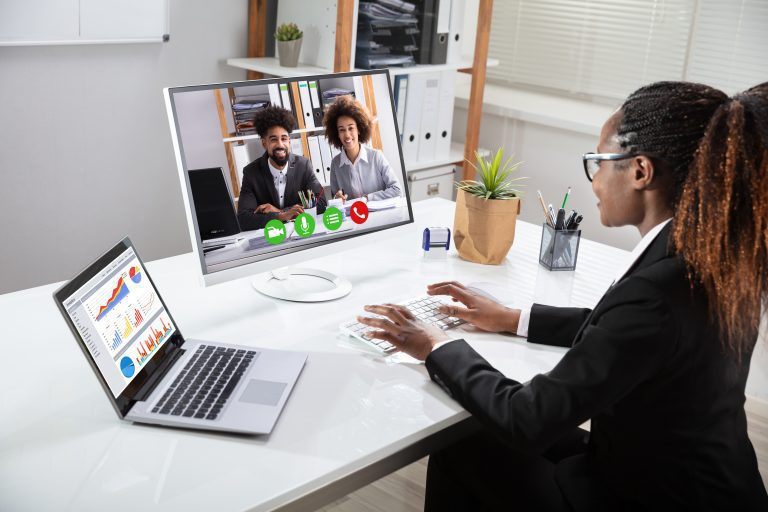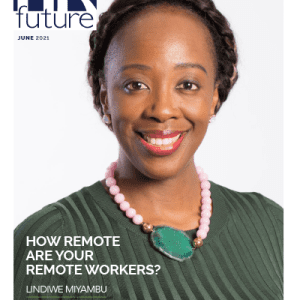L&D that uses gamification can enhance your company’s success.
In this era of massive change and what’s been described as the Great Reshuffle, to remain successful and competitive, organizations must innovate and grow. Bringing new products to market, expanding into additional territories, and acquiring other businesses used to be the primary means companies used for growth and innovation. Now, learning and development (L&D) has emerged as one of the best ways for companies to evolve and stay ahead of the curve.
Several years ago, LinkedIn reported that 94% of employees said they’d stay with a company longer if they felt their bosses were invested in learning and career development. L&D helps employees feel supported and included, promoting higher employee satisfaction, which leads to improved employee retention. An investment in L&D can also help a company experience rapid growth in terms of competitiveness and profits.
Fostering an L&D culture leads to a happier and more productive workforce
L&D is an integral part of organizational success because it taps into the potential of participating team members and encourages them to be more passionate about the work that they do. It’s far more costly to ignore staffing issues and to try to swap out underperforming employees for new hires than it is to put together a talent development plan that addresses employees at every stage of their professional journey. In fact, according to a survey from ClearCompany, 74% of employees said a lack of employee development initiatives keeps them from their full potential in the workplace.
L&D initiatives also encourage growth, prevent skills shortages, promote upskilling and reskilling, and reduce employee turnover, among many other benefits. In terms of growth, when employees learn new skills or hone their existing skill sets, an organization can stay ahead of industry trends and maintain a competitive advantage. Investing in employees learning and development can also reduce skills shortages, which is critical in the technology and manufacturing sectors.
L&D is often considered as training to accomplish specific learning objectives. But L&D is so much more than training classes and e-learning. It provides social connectedness, fosters motivation, opens employees’ minds to possibilities, and allows them to tap into interest areas that can elevate their day-to-day work output. However, this only happens when workplaces continuously invest in L&D.
An investment in L&D is good for the bottom line
Today’s workforce craves opportunity and growth, making talent development more important than ever. Unfortunately, when organizations look to cut costs, L&D budgets are often the first to be slashed – historically, because leaders didn’t understand the value of investing in employee training. Although L&D is now thought of as a competitive differentiator, many initiatives are still viewed merely as another check in a box, rather than critical business strategies. L&D needs to align with business goals and requires an appropriate allocation of resources and budget to ensure it is done right.
When implemented correctly, companies with comprehensive training programs have a 24% higher profit margin and as much as 218% higher income per employee. Businesses which foster a learning culture also have an increased retention rate of between 30 to 50%. Companies without a strong investment in L&D stand to lose many more employees than those who invest in a learning environment. Considering the fact that the average cost of replacing an employee is thought to be in the ballpark of one to four times their salary, 30 to 50% better retention can make a significant difference financially.
Create an L&D culture
If businesses believe their most important assets are their employees, supporting employees’ well-being is critical. This includes embracing differences and maintaining a positive, visible, and interconnected corporate and L&D culture.
There are a few key factors to creating a successful L&D culture. First, a company has to encourage thoughtful leadership. The best L&D methods have a proactive approach, not a reactive one. This is demonstrated via leadership welcoming new concepts and ideas within the organization. It gives every employee an opportunity to solve organizational issues and assist with reaching revenue goals. This creates a sense of belonging within an organization/place of work.
Second, today many companies are trying to build a culture where everybody belongs. This is a great approach as “inclusion in the workplace is measurable, actionable, and good for your business, even in a tough economy.” According to Boston Consulting Group’s (BCG) latest BLISS Index report, there’s now an undeniable connection between inclusion and retention. If people feel included, the Index shows, their happiness and overall well being improve and retention rates increase.
Inclusion happens when organizations equally hear and value the input of every member of a diverse team while treating those members with respect. Inclusivity is also about access and opportunity. For a workplace to be truly inclusive, everyone in it should have the same access to resources, training, guidance, promotional opportunities, and anything else that could contribute to the success of the individual and/or the organization.
Use gamification to jumpstart L&D
Gamification is rooted in psychology, sociology, reasoning and logic because it maps, leverages, and exploits the complex and intricate relationships between human behaviours and what drives them. This is why L&D leaders have begun applying gaming principles and mechanics to what they want to achieve – to get the most out of the “player.” Whether found in a game, or in a course, they have the same motivational effect, while also building connection, allowing employees to vulnerably reflect and achieve growth through recognition.
Gamification can jumpstart L&D by introducing game elements and mechanics into the process, which can increase engagement, motivation, and participation. Here’s how gamification can be effective:
1. Enhancing engagement: Gamification makes learning more enjoyable and interactive, capturing learners’ attention and encouraging active participation. It introduces elements such as challenges, rewards, and friendly competition, which motivate learners to actively engage in the learning process.
2. Increasing motivation: By incorporating elements like points, badges, leaderboards, and levels, gamification taps into learners’ intrinsic motivation, making them more eager to progress, achieve goals, and receive recognition for their achievements.
3. Facilitating knowledge retention: Games often involve repetition, reinforcement, and retrieval practice, which are known to enhance memory retention. Gamification can employ mechanisms such as quizzes, simulations, and interactive scenarios, providing learners with opportunities to apply and reinforce their knowledge.
4. Fostering experiential learning: Games create a safe environment for learners to explore and experiment, allowing them to learn from their mistakes and apply critical thinking skills. They can simulate real-world scenarios, providing hands-on experiences and practical learning opportunities.
5. Promoting continuous learning: Gamification encourages a culture of continuous learning by providing ongoing challenges, new levels, and opportunities for skill development. It can also incorporate social elements, allowing learners to collaborate, compete, and share their experiences with peers, fostering a sense of community and lifelong learning.
By leveraging gamification, L&D initiatives can be transformed into engaging and effective experiences that accelerate knowledge acquisition and skill development.
Lauren Fitzpatrick Shanks is the founder and CEO of KeepWOL and an award-winning engineer and tech leader, who spent fourteen years working at five Fortune 500 companies, holding various leadership roles in design, system testing, product creation, staffing, software program management and operations. Lauren is the first Black woman to graduate from The University of Kansas’ Aerospace Engineering Department and the first Black woman to win the American Institute of Aeronautics and Astronautics (AIAA) international design competition.
























